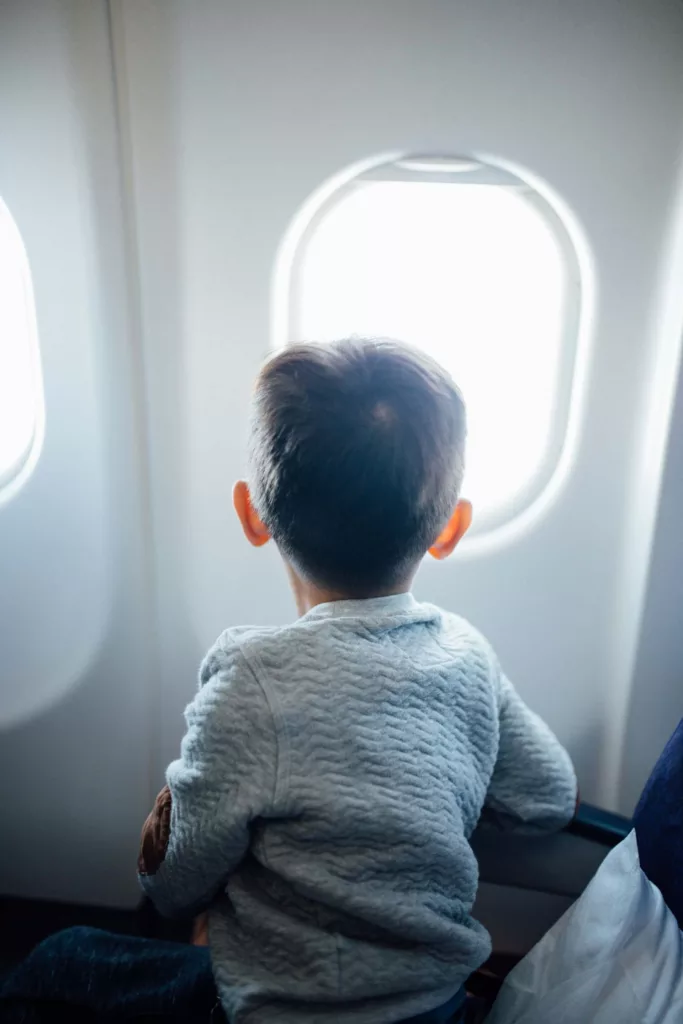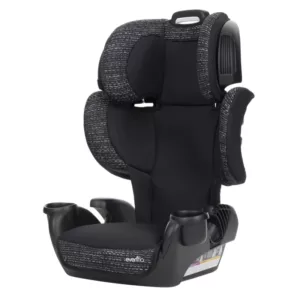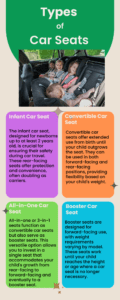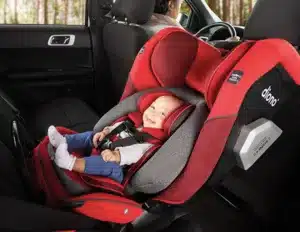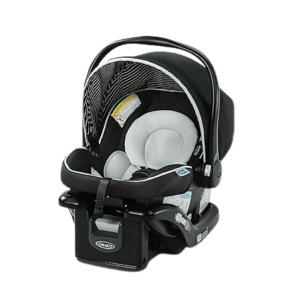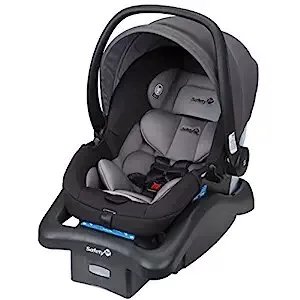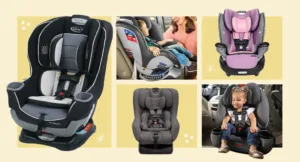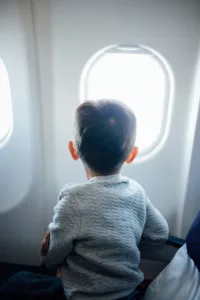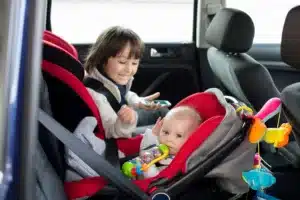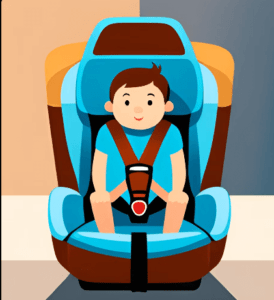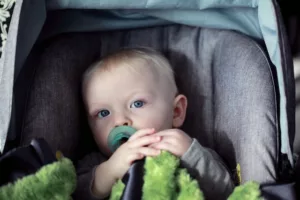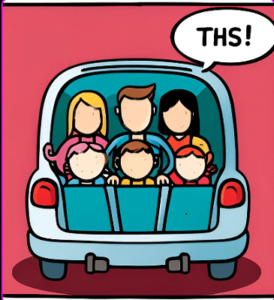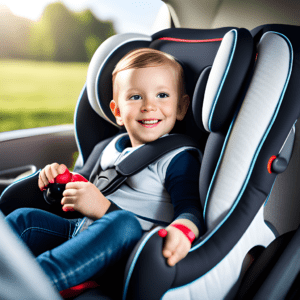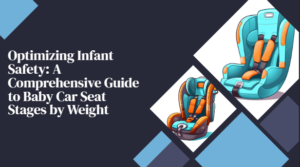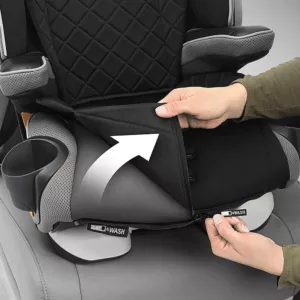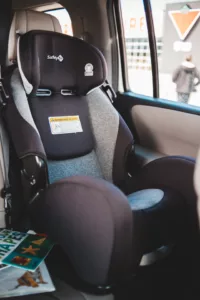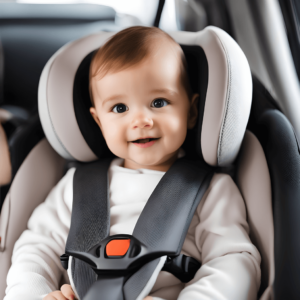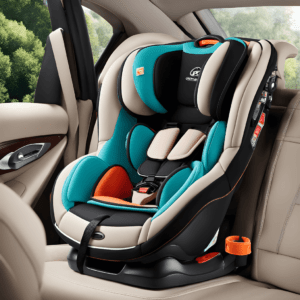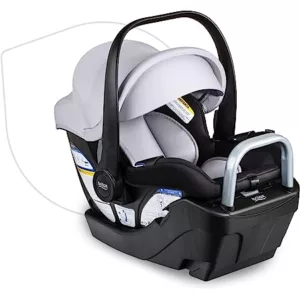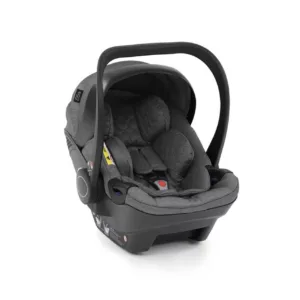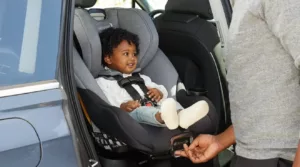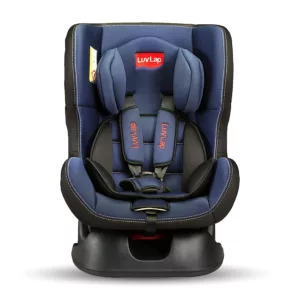How to Fly with a baby car seat? Discover the top 20 best ways to ensure a safe and comfortable journey for your baby while flying with a car seat. Expert tips and essential guidance for seamless family travel.
Thank you for reading this post, don't forget to subscribe!Embarking on a journey with your little one can be an exhilarating experience, but when it comes to flying with a baby car seat, ensuring their safety and comfort becomes a top priority. We understand the challenges and questions swirling in your mind: Which car seat is the best for air travel? How do I install it securely on the aircraft seat? What about airline policies and regulations?
Fret not! In this comprehensive guide, we unveil the 20 best ways to fly with a baby car seat, covering everything from pre-flight preparations to post-landing arrangements. Beyond that, we’ve got you covered with practical solutions to tackle potential challenges, ensuring a smooth and enjoyable journey for both you and your little one.
From researching airline policies and choosing the perfect car seat to navigating the airport like a pro and making your child feel at home on board – we leave no stone unturned. Get ready to explore a treasure trove of tips and tricks that will make your air travel experience with your baby car seat a breeze!
So, fasten your seat belts and get ready to embark on a flight filled with ease, comfort, and peace of mind. Let’s soar the skies with confidence and create unforgettable memories together. Safe travels await!
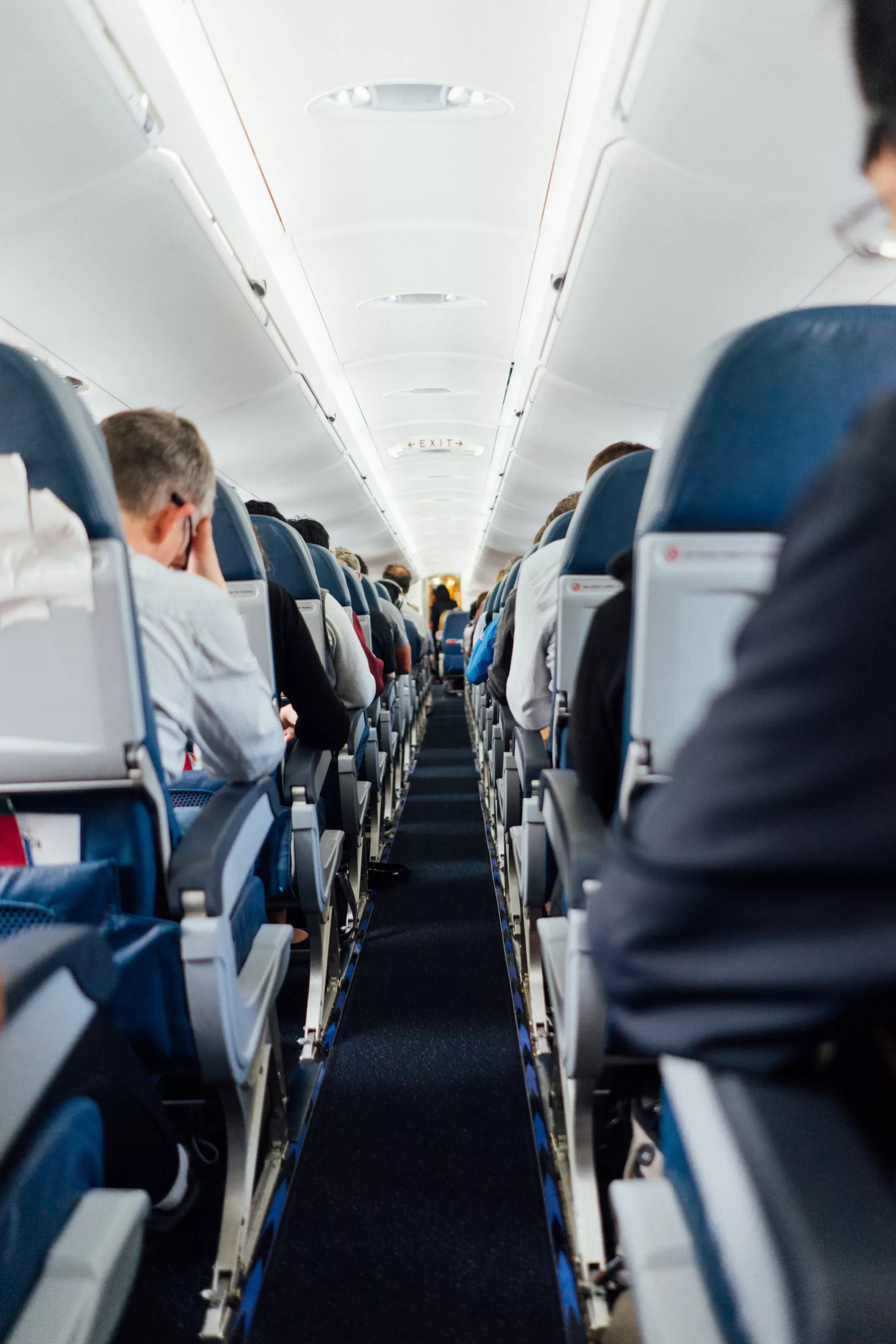
What are the 20 Best Ways to Fly with a Baby Car Seat?
- Research Airline Policies and Requirements
- Choose the Right Car Seat
- Consider a Window Seat
- Securely Fasten the Car Seat on the Aircraft Seat:
- Use a Seat Belt Extender
- Plan for Comfortable Sleeping Arrangements
- Keep Your Child Engaged
- Bring Necessary Accessories
- Utilize In-flight Amenities
- Communicate with Flight Attendants
- Plan for Security Screening
- Consider Early Boarding
- Dress Your Child Appropriately
- Document Necessary Documentation
- Stay Hydrated.
- Plan for Diaper Changes
- Create a Familiar Environment
- Be Mindful of Ear Pressure
- Practice Patience and Flexibility
- Be Mindful of Transportation at Your Destination
An Ove View of the 20 Best Ways to Fly with a Baby Car Seat
Table of Contents
ToggleResearch Airline Policies and Requirements – Fly with a Baby Car Seat
Thoroughly research the policies and requirements of the airline you will be flying with. Look into specific guidelines regarding car seats:
- Usage
- Weight
- Size Restrictions, and
- Any additional documentation is required.
Choose the Right Car Seat – Car Seats On Planes
Selecting the appropriate car seat for air travel is crucial. opt for a:
- Lightweight
- Compact
- FAA-approved car seat that meets safety standards.
- Easy installation
- Adjustable harnesses, and
- Comfortable padding
Consider a Window Seat -Traveling with Car Seats – Fly with a Baby Car Seat
- If possible, choose a window seat for you and your child. This provides:
- A sense of privacy
- Reduces disturbances from other passengers, and
- Gives your child a view to engage with during the flight.
Securely Fasten the Car Seat on the Aircraft Seat – Checking Car Seat on Plane
- Ensure that the car seat is securely fastened to the aircraft seat.
- Follow the manufacturer’s instructions for installation, and ensure a tight fit.
- Use the seat belt or any additional restraints recommended by the manufacturer or airline.
Use a Seat Belt Extender – Traveling with a Car Seat
- If the aircraft seat belt is too short to properly secure the car seat, request a seat belt extender from the flight attendant.
- This will allow for a secure and snug fit, ensuring your child’s safety.
Plan for Comfortable Sleeping Arrangements – Fly with a Baby Car Seat
If your flight is during your child’s usual sleep time, consider bringing:
- A small pillow
- Blanket, or
- A favorite stuffed animal
to create a comfortable sleeping environment.
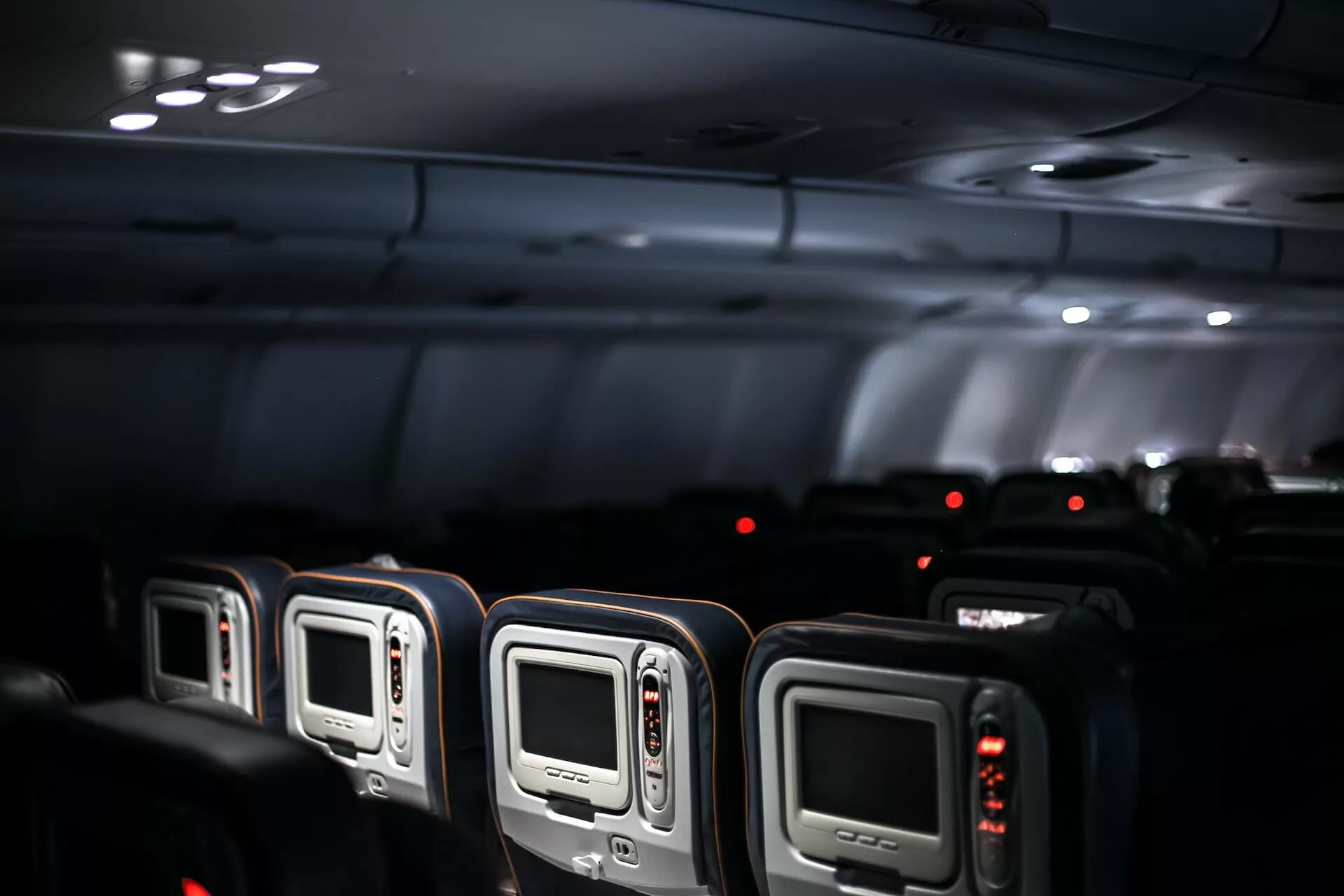
Keep Your Child Engaged- Bring Age-Appropriate
- Toys
- Books
- Electronic devices
to keep your child entertained during the flight. Consider interactive activities or games that can keep them engaged and occupied throughout the journey.
Bring Necessary Accessories
Pack essential accessories to enhance your child’s comfort and convenience during the flight. Consider items such as
- A canopy
- Sunshade to protect from bright light
A head support cushion
- A seat protector to prevent indentations on the aircraft seat.
Utilize In-flight Amenities – Fly with a Baby Car Seat
- Take advantage of in-flight amenities to make the journey more comfortable.
- Request a bassinet or a bulkhead seat with more legroom.
Communicate with Flight Attendants – How to Bring Car Seat on Plane
- Inform the flight attendants about your intention to use a car seat on board.
- They can provide guidance.
- Ensure proper installation
Plan for Security Screening – Fly with a Baby Car Seat
Prepare for security screening by removing accessories from the car seat, such as:
- Toys
- Blankets
- Pillows
- Place them in separate bins for X-ray screening.
Follow the instructions of the security personnel and ensure a smooth screening process.
Consider Early Boarding – Fly with a Baby Car Seat
Take advantage of early boarding if offered by the airline. This allows you to secure a suitable spot for installing the car seat and get settled before other passengers’ board.
Dress Your Child Appropriately: Fly with a Baby Car Seat
- Dress your child in comfortable and easily adjustable clothing.
- Choose layers to accommodate temperature changes during the flight.
- Avoid bulky clothing.
Document Necessary Documentation – Fly with a Baby Car Seat
Ensure you have all the required documentation for your child, such as:
- A birth certificates
- Passport
- Any additional identification.
Keep these documents readily accessible to present when needed.
Stay Hydrated – Safeguard Fly with a Baby Car Seat
- Airplane cabins can be dehydrating, so it’s important to keep your child hydrated.
- Bring a spill-proof water bottle and offer frequent sips of water or appropriate fluids.
Plan for Diaper Changes – Fly with a Baby Car Seat
- Be prepared for diaper changes during the flight.
- Pack extra diapers, wipes, and a changing pad in your carry-on bag.
- Consider using a spacious and easy-to-access diaper bag to ensure quick and convenient access to diaper supplies.
Create a Familiar Environment – Fly with a Baby Car Seat
- Bring a small blanket or a piece of clothing that carries the familiar scent of home.
Be Mindful of Ear Pressure – Fly with a Baby Car Seat
- Encourage swallowing by offering a bottle
- A pacifier during these times to help equalize ear pressure
Practice Patience and Flexibility – Flying with Car Seat
- Keep in mind that flying in a car seat can have unpredictable moments.
- Practice patience and flexibility, remaining calm if unexpected situations arise.
Be Mindful of Transportation at Your Destination
- Evaluate Your Transportation Choices from the Airport to Your Destination.
- If renting a car, check if the rental agency provides car seats.
- If using public transportation or rideshare service, make sure the car seat is compatible and can be properly installed.
By incorporating these additional tips into your flying experience, you can further ensure the comfort, safety, and enjoyment of your child during the journey. Remember to plan, pack thoughtfully, and maintain a positive mindset throughout the process. Safe travel!
Best Ways to Fly with Baby Car Seat – Pros and Cons
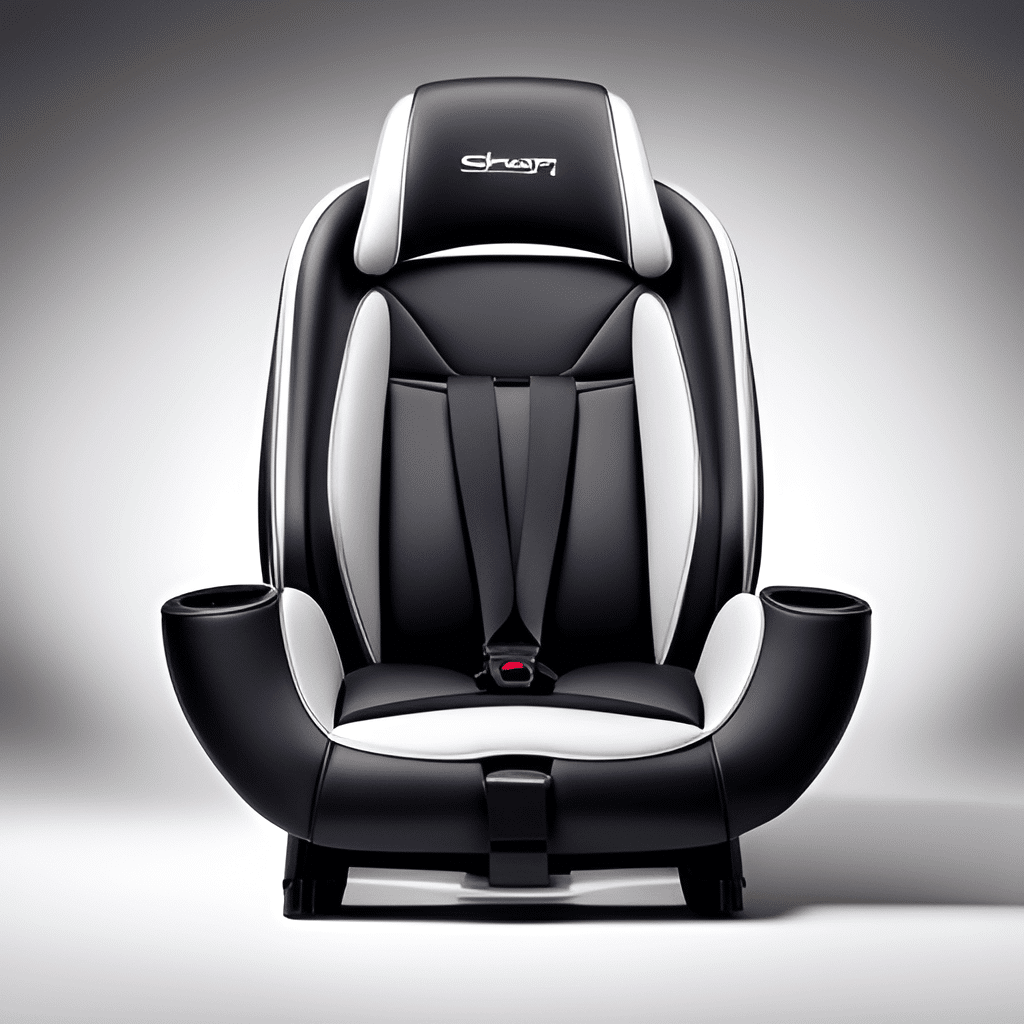
| Best Ways | Pros | Cons |
| Research Airline Policies and Requirements | Compliance with specific airline regulations avoiding last-minute surprises Ensuring a smooth boarding and travel experience | Policies and requirements may vary between airlines Requiring additional research and preparation |
| Choose the Right Car Seat | Increased safety and comfort for your child Suitable features for air travel Meeting safety standards | Cost considerations, finding the right balance between safety features and budget |
| Consider a Window Seat | Offers Privacy Reduced disturbances A view for your child to engage with Potential additional wall support for car seat installation | Limited mobility, restricted access to the aisle Potential difficulty in reaching overhead compartments |
| Secure the Car Seat on the Aircraft Seat | Properly fastened car seat ensures safety and familiarity for your child | The installation process may take time and effort, and potential challenges due to seat dimensions and constraints |
| Use a Seat Belt Extender | Allows for a secure and snug fit of the car seat Flexibility in accommodating different seat belt lengths | Seat belt extenders may not be available on all airlines or aircraft Limited availability during the flight |
| Plan for Comfortable Sleeping Arrangements | Better relaxation and sleep for your child educed fussiness and discomfort, and a more peaceful journey | Additional items to carry and manage, potential challenges in creating a comfortable sleeping environment in a confined space |
| Keep Your Child Engaged | Reduced boredom and restlessness a distraction from unfamiliar surroundings Enjoyable and engaging flight experience | Over packing of toys or entertainment items Potential challenges in keeping your child engaged for the entire duration of the flight |
| Bring Necessary Accessories | Enhanced comfort and convenience for your child Protection from bright lights and indentations on the aircraft seat Familiarity with thein items | Additional items to carry and manage Potential cost considerations Limited space for storing accessories during the flight |
| Utilize In-flight Amenities | More comfortable seating option Additional legroom or bassinet Increased comfort during the journey Potential assistance from flight attendants | Availability of amenities may vary, limited availability on certain flight routes, potential challenges in requesting or securing these amenities |
| Communicate with Flight Attendants | Guidance and assistance in installing the car seat, prompt response to issues or emergencies during the flight, peace of mind knowing you have support | Language barriers or communication challenges, potential variations in the level of assistance provided |
| Plan for Security Screening | Compliance with security regulations Smooth and hassle-free screening process Avoiding delays or additional security checks | Additional time and effort required for removing and re-packing accessories Potential challenges in following security personnel instructions |
| Consider Early Boarding | Ample time to secure a suitable spot for installing the car seat Reduced stress and rush during boarding Potential assistance from flight attendants | Early boarding availability may vary, and potential challenges in managing your child during the extended waiting time Potential overcrowding in the boarding area |
| Dress Your Child Appropriately | Comfortable and easily adjustable clothing for your child Suitable layers to accommodate temperature changes Easy access for diaper changes | Potential challenges in finding the right balance between comfort and dress code requirements Potential difficulty in dressing or changing clothes in a confined space |
| Document Necessary Documentation | Easy access to essential documents for your child Compliance with identification requirements, smooth check-in and security processes | Potential loss or misplacement of important documents Additional responsibility to keep them safe and accessible throughout the journey |
| Stay Hydrated | Maintaining hydration for your child in the dry cabin environment Preventing discomfort and dehydration Ensuring their well-being | Potential challenges in carrying and managing fluids Restrictions on carrying liquids through security Potential spills or leaks during the flight |
| Plan for Diaper Changes | Preparedness for diaper changes during the flight Ensuring your child’s comfort and cleanliness Avoiding potential discomfort or rash | Additional diaper supplies to carry and manage Limited space and facilities for diaper changes on the aircraft Potential turbulence or inconvenience during the process |
| Create a Familiar Environment | Comfort and reassurance for your child in a new and unfamiliar environment Potential calming effect Reduced anxiety | Additional items to carry and manage Potential challenges in maintaining a familiar environment in a confined space Potential distraction or discomfort caused by familiar items |
| Be Mindful of Ear Pressure | Minimizing discomfort and pain for your child during changes in air pressure Alleviating potential earaches or crying Ensuring a more pleasant journey | Potential challenges in encouraging swallowing or equalizing ear pressure Potential resistance from the child Limited control over external factors such as cabin pressure changes |
| Practice Patience and Flexibility | Maintaining a positive mindset and calm demeanor Reducing stress and tension for both you and your child Potentially smoother interactions with other passengers | Potential challenges in managing unexpected situations Tiredness or frustration during a long flight The need to adapt plans and expectations to unforeseen circumstances |
| Be Mindful of Transportation at Your Destination | Planning for transportation option Ensuring a smooth transition from the airport to your final destination Peace of mind knowing you have considered the logistics | Potential challenges in finding suitable transportation options with car seat compatibility Additional costs or arrangements required Potential language or communication barriers at your destination |
Related Articles:
Flying with your child – Read>
Flying with Children Read>
Fly with a Baby Car Seat- Overcoming Challenges for a Safe and Comfortable Journey
Flying in a baby car seat is an important decision to ensure the safety and well-being of your little one during air travel. While it offers numerous benefits, such as added protection and familiar surroundings for your child, there are also challenges to overcome. In this detailed and in-depth guide, we will explore the potential challenges you may face when flying in a baby car seat, along with practical solutions and their pros and cons. By understanding these challenges and being prepared, you can navigate the skies confidently and create a positive travel experience for both you and your child.
Challenge 1: Limited Space on the Aircraft
Installing a car seat in the limited space of an airplane seat can be challenging. The narrow aisle and compact seating arrangements may make it difficult to properly secure the car seat.
Solution:
Choose a compact car seat: opt for a car seat specifically designed for air travel. These seats are often narrower, allowing for easier installation in tight spaces.
Request a seat with more legroom: When booking your flight, consider selecting seats with extra legroom to provide additional space for installing the car seat.
Communicate with airline staff: Inform the airline in advance about your intention to use a car seat. They may be able to provide guidance or assign you seats with more space.
Pros: Increased safety for your child, familiar and secure environment.
Cons: Limited space may affect your comfort, especially on long flights.
Challenge 2: Carrying and Transporting the Car Seat
Handling a bulky and heavy car seat throughout your journey can be cumbersome, especially when navigating through airports or during layovers.
Solution:
Use a car seat travel bag: Invest in a travel bag specifically designed for car seats. These bags provide protection and ease of carrying, making it more convenient to transport the car seat.
Utilize a car seat travel cart: Consider using a travel cart that attaches to the car seat’s base, transforming it into a stroller-like device. This option allows you to wheel the car seat through the airport.
Gate-check the car seat: If allowed by the airline, you can check the car seat at the gate, eliminating the need to carry it throughout the airport. It will be delivered to you to the aircraft door upon arrival.
Pros: Easier transportation, protection for the car seat, and reduced strain on your back and arms.
Cons: Additional costs for travel bags or carts, potential wear and tear on the car seat during handling.
Challenge 3: Understanding Airline Restrictions and Policies
Different airlines may have specific rules and regulations regarding car seat usage, including weight, size, and installation requirements. Understanding and adhering to these policies can be challenging.
Solution:
Research airline policies in advance: Thoroughly review the airline’s website or contact their customer service to familiarize yourself with their specific regulations. Take note of any weight, size, or installation requirements for the car seat.
Document important information: Keep a printed copy or digital record of the airline’s policies and any relevant correspondence for reference during your journey.
Consult online forums or communities: Seek advice from other parents who have flown with car seats on the same airline. Their firsthand experiences can provide valuable insights into navigating specific policies.
Pros: Compliance with airline regulations, avoiding last-minute surprises or conflicts. Cons: Policies may vary between airlines, requiring additional research and preparation for each trip.
Challenge 4: Properly Installing the Car Seat
Ensuring the car seat is securely fastened to the aircraft seat and properly installed according to the manufacturer’s instructions is vital for your child’s safety. However, the installation process may present challenges.
Solution:
Practice installation at home: Familiarize yourself with the installation process of the car seat before your trip. Practice installing it in different settings, such as your vehicle or on a compatible stroller, to gain confidence and become more efficient.
Seek assistance from airline staff: If you encounter difficulties during installation or have questions about securing the car seat, don’t hesitate to ask for help from the airline staff. They are trained to assist passengers and can provide guidance and support.
Use installation aids: Consider using installation aids such as seat belt locking clips or additional restraint systems if required by the specific car seat and airline.
Pros: Increased confidence in proper installation, and enhanced safety for your child.
Cons: The installation process may take time and require extra effort, and potential challenges due to seat dimensions and constraints.
Final Verdict
Flying in a car seat requires careful preparation and adherence to airline policies, while also considering your child’s comfort and safety. By following these 20 best ways, you can navigate the journey smoothly and ensure a positive experience for both you and your little one. Remember to research airline policies, choose the right car seat, securely install it on the aircraft seat, and make necessary arrangements for transportation at your destination. With proper planning and attention to detail, flying with a car seat can provide peace of mind and ensure a safe and convenient journey for your child.
Frequently Asked Questions – FAQ
How can I determine if my car seat meets the airline’s approval?
Checking car seat is airline approved:
- Check the manual or look for an FAA approval label on the seat.
- Explore the manufacturer’s website or contact them directly for confirmation.
- Consult the airline for their specific requirements.
Do you need a bag for a car seat at the airport?
Yes, using a bag for your car seat at the airport is recommended. A car seat travel bag protects from dirt and damage and ensures more accessible transportation. It also helps keep all the car seat components together during travel.
How do you carry a car seat while traveling?
When traveling with a car seat, you have a few options for carrying it:
- Use a car seat travel bag or backpack specifically designed for this purpose.
- Attach wheels to the car seat using a specialized car seat travel cart.
- Check if the car seat is compatible with a stroller and use it to transport the seat.
Related Article
